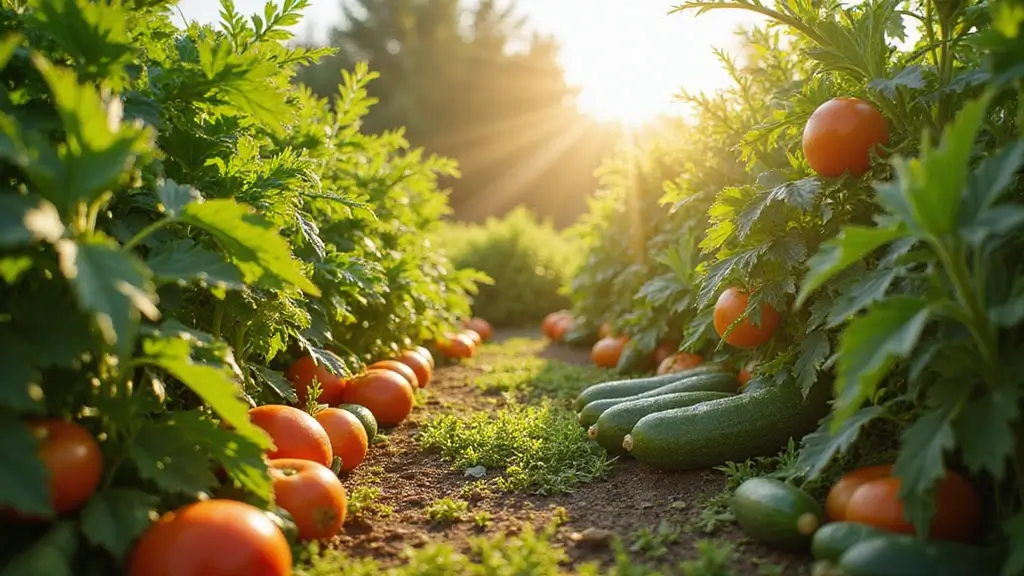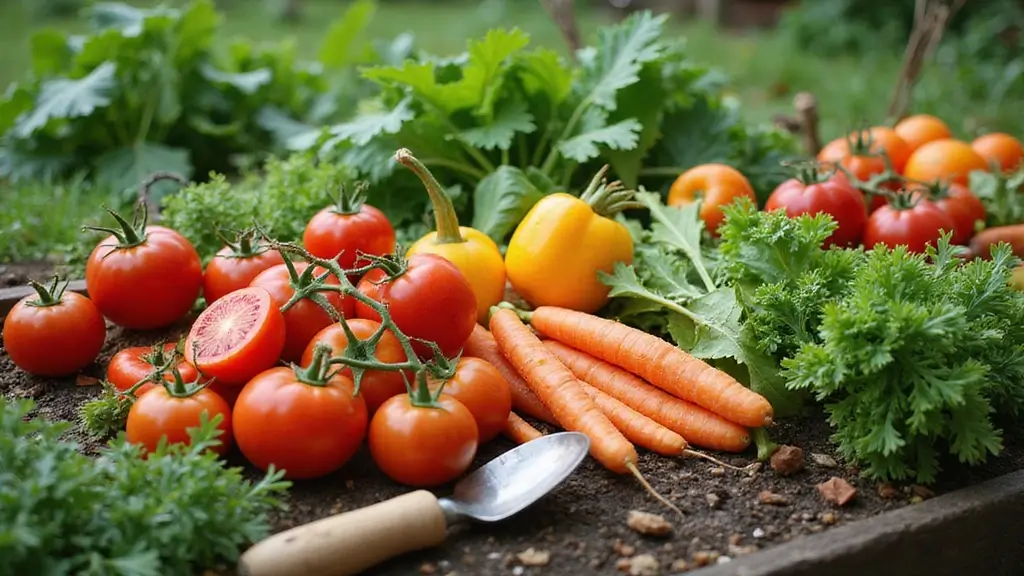10 Easy Vegetable Garden Tips That Will Transform Your Backyard into a Green Paradise!
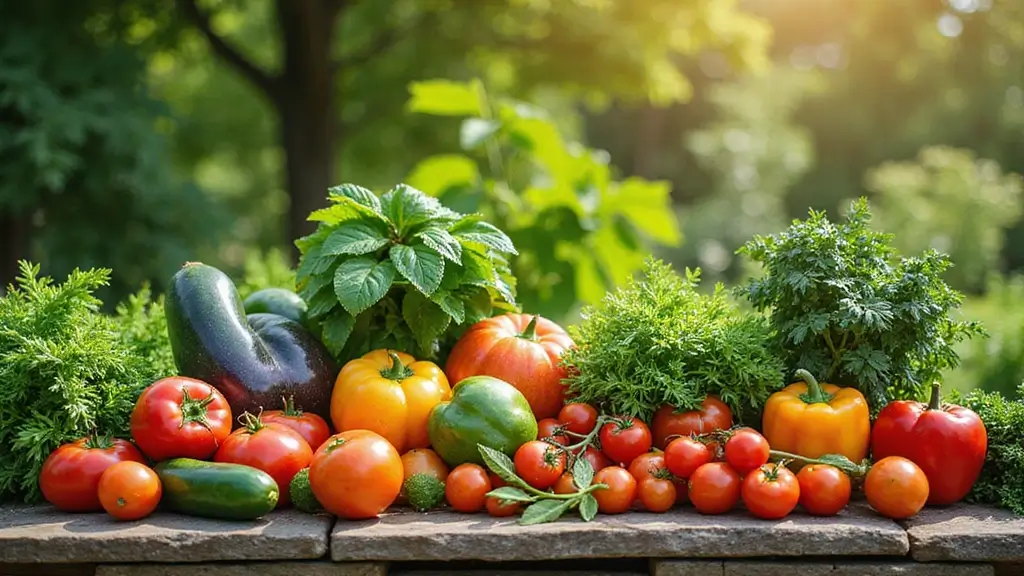
Creating a vegetable garden can feel like a daunting task, but it’s all about starting small and learning as you go.
With just a few easy tips, you can turn your backyard into a vibrant green paradise filled with fresh vegetables. Gardening is not just a hobby; it’s a rewarding way to connect with nature, eat healthier, and enjoy the satisfaction of nurturing your own food.
Let’s explore some beginner-friendly tips that will help you cultivate a flourishing vegetable garden that will impress your friends and family!
1. Choose the Right Location
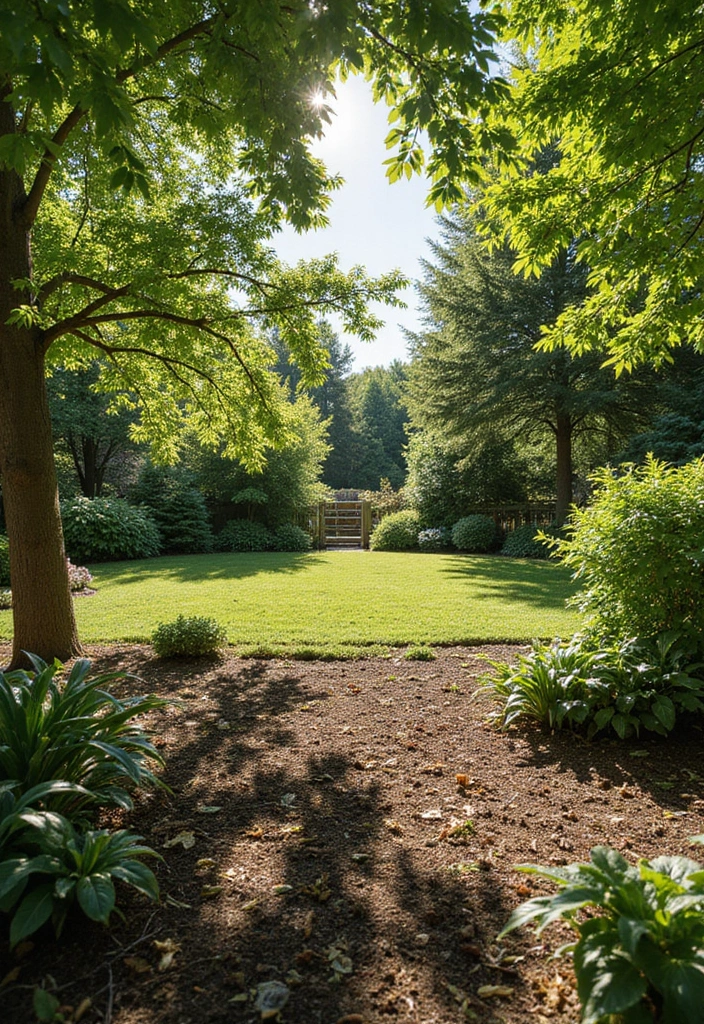
The first step towards a successful vegetable garden is picking the right spot.
Look for a sunny area in your backyard that gets at least 6-8 hours of sunlight a day. A south-facing patch is often the best choice. Additionally, using a garden soil test kit can help you analyze the soil’s pH and nutrient levels, ensuring that your chosen location has the right conditions for your vegetable crops.
Ensure the space has good drainage and is easily accessible for watering and maintenance. A garden hose with adjustable nozzle is a great investment, as it allows you to efficiently water your plants, reaching every corner of your garden without fuss. Proximity to your kitchen can also make it easier to grab fresh veggies while cooking!
Consider nearby trees or structures that might cast shadows later in the day and avoid areas that collect puddles after rain. To make your gardening experience more comfortable, you might find a garden kneeler and seat useful. This tool provides a sturdy seat for resting and a cushioned kneeling pad for those times when you’re planting or weeding. With a little planning and the right tools, you’ll be set for a productive growing season.
2. Start Small with Easy Veggies
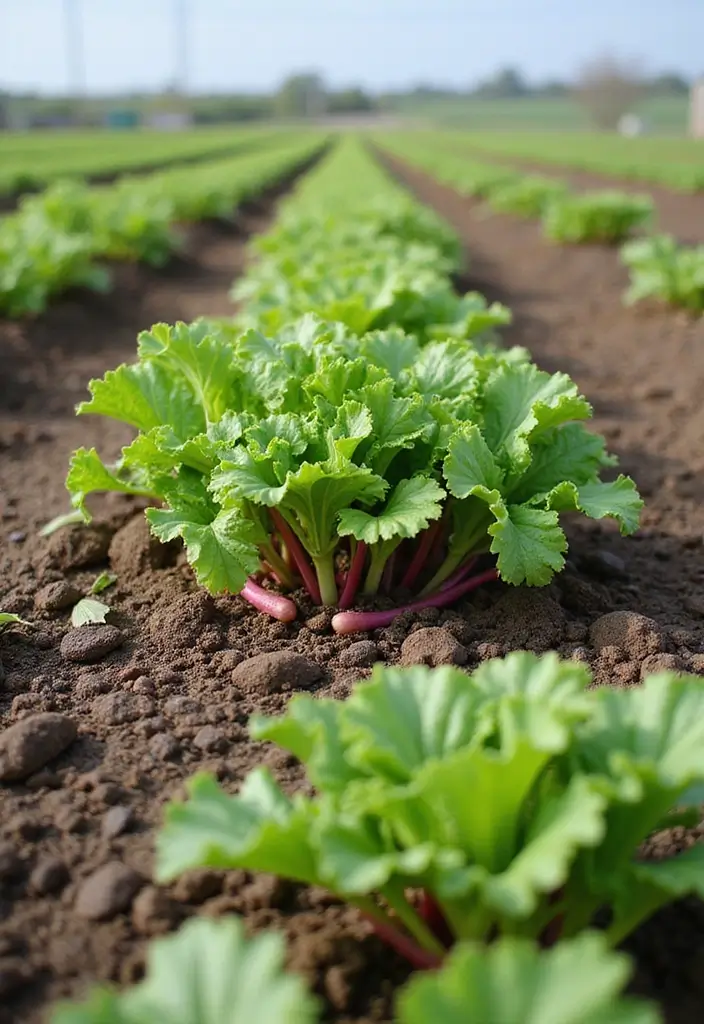
If you’re new to gardening, starting small is key. Think about planting easy-to-grow vegetables like radishes, lettuce, or zucchini. These plants tend to sprout quickly, giving you a sense of accomplishment early on.
To kickstart your gardening journey, consider using a garden starter kit like the Burpee SuperSeed Seed Starting Tray. This reusable seed starter tray can help you germinate your vegetable, flower, and herb seeds indoors, setting a solid foundation for your garden.
Once you get the hang of things, gradually introduce more challenging crops like tomatoes or peppers. Keep in mind that some veggies, like carrots and beets, require patience but can be very rewarding!
A smaller garden will also make it easier to manage weeds, pests, and watering. You might find a raised garden bed planter useful, such as the Utopia Home Galvanized Raised Garden Bed Kit. This easy-to-assemble metal raised bed helps to keep your plants organized and accessible, allowing you to enjoy the gardening experience without feeling overwhelmed.
Plus, you’ll have more fun watching your garden grow! A gardening tools set, like the Kynup set, can make the process even more enjoyable. With rust-proof, stainless steel tools, you’ll have everything you need to cultivate and maintain your garden with ease.
Start small and watch your vegetable garden flourish! Easy-to-grow veggies like radishes and zucchini will boost your confidence and keep you hooked. Happy gardening!
3. Prepare Your Soil
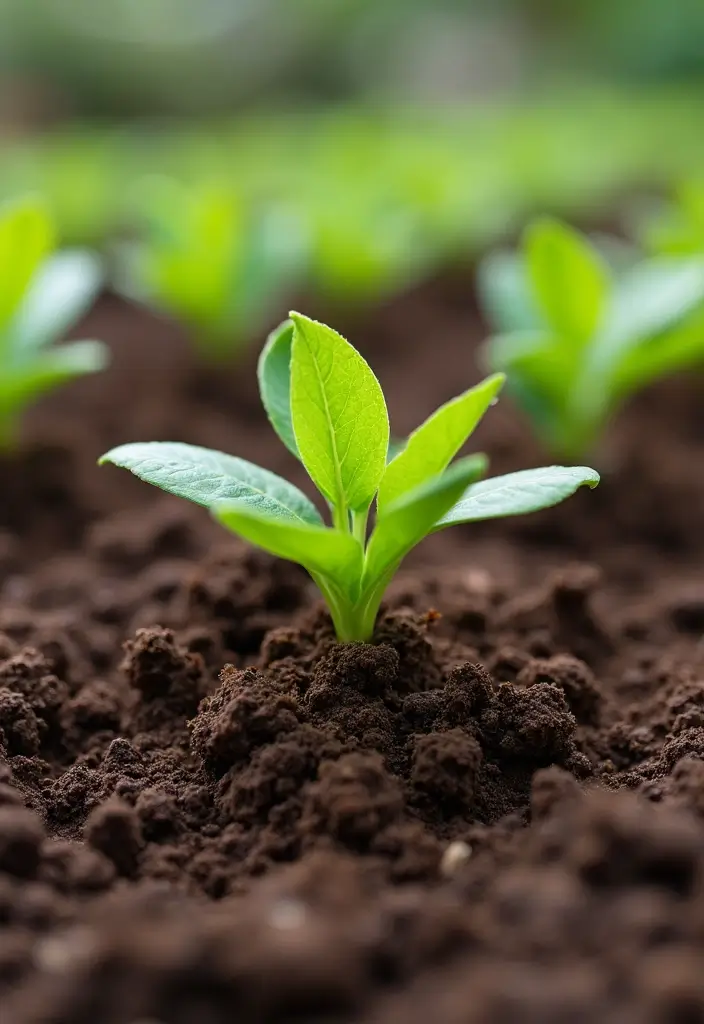
Quality soil can make all the difference in your vegetable garden. Start by testing your soil to understand its pH and nutrient levels with a Soil pH Test Kit. This kit includes upgraded 125 soil pH test strips and measuring cylinders, providing accurate testing for your garden, lawn, grass, and compost. Knowing your soil’s pH will help you make informed decisions on how to amend it for optimal plant growth.
To enrich your soil and promote healthy growth, consider adding organic matter like organic compost. This 40-pound blend is odor-free, naturally moist, and fibrous, making it an excellent choice for enhancing your garden’s nutrient levels and improving moisture retention. With quality compost, your plants will have better access to essential nutrients, ensuring they thrive.
When preparing your soil, especially if you have rocky or heavily clay ground, think about creating raised beds. A raised garden bed kit can be a great solution. These galvanized planter boxes improve drainage, reduce soil compaction, and simplify weed management, making gardening easier and more efficient.
The more effort you put into your soil, the better your crops will thrive!
4. Water Wisely
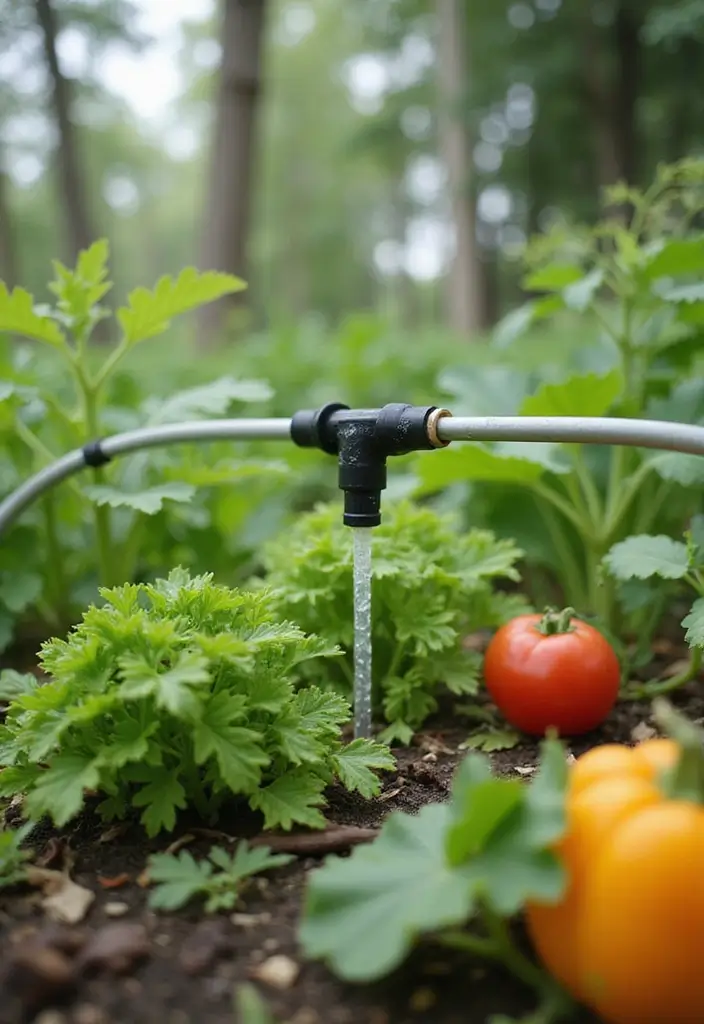
Proper watering is crucial for a flourishing garden. Instead of watering every day, aim for deep, infrequent watering to encourage roots to grow deeper. Early morning is the best time to water, as it allows plants to absorb moisture before the heat of the day.
Consider using a soaker hose to help conserve water and deliver moisture directly to the soil, preventing fungal diseases that can occur from wet leaves. This flat soaker hose, with its heavy-duty double-layer design, can save up to 80% water and is perfect for ensuring your vegetable plot gets the hydration it needs without wasting a drop.
Additionally, a drip irrigation system can be an excellent investment for gardeners looking to optimize their watering routine. The drip irrigation kit by Rain Bird is perfect for repair and expansion, allowing you to customize your watering solution based on the specific needs of your garden.
Don’t forget to monitor your garden daily; a little wilting can indicate that it’s time to water. To ensure you’re providing the right amount of moisture, consider using a moisture meter like the one from Klein Tools. This handy device detects moisture levels up to ¾ inch below the surface, helping you learn how much water your veggies need over time. With the right tools, you’ll be well on your way to achieving a thriving garden.
5. Embrace Companion Planting
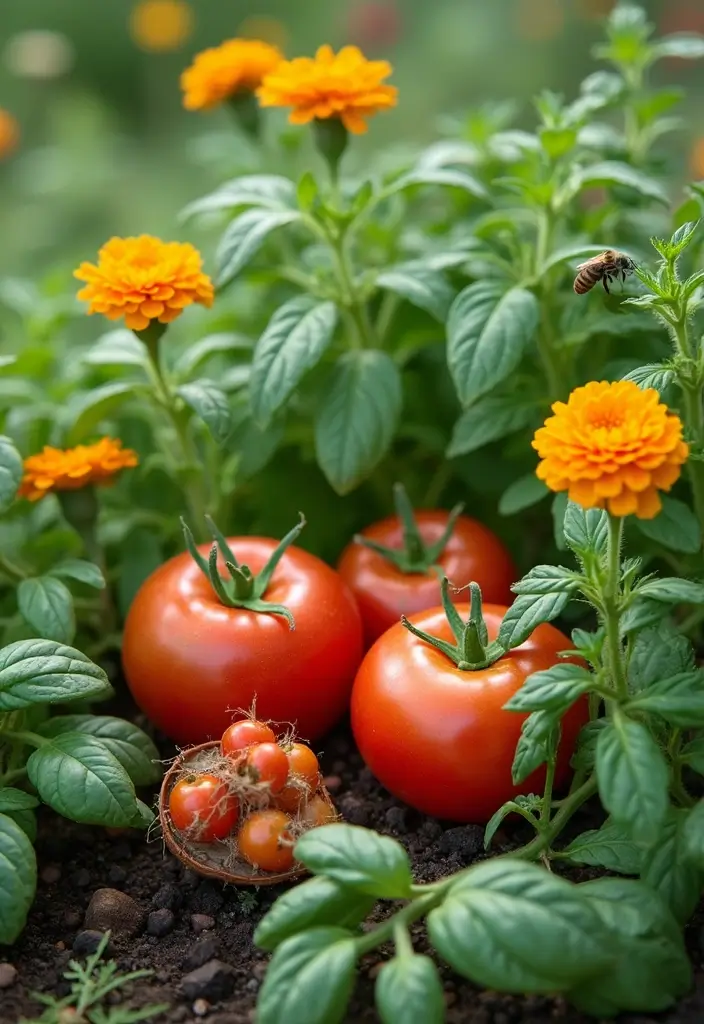
Companion planting is a great way to boost your garden’s health naturally. Some plants grow better together; for example, basil can enhance tomato flavor, and marigolds can deter pests. To help you understand which plants benefit each other, consider using a companion planting guide book. This resource will assist you in planning your rows effectively.
Mixing in flowers can also attract beneficial insects like bees and ladybugs, which aid pollination and pest control. You might want to try the bee and butterfly garden seed mix, which includes a variety of non-GMO flowers designed to attract these helpful pollinators.
Additionally, if you find that pests are becoming an issue, an organic pest control spray made from peppermint oil can naturally repel unwanted visitors like spiders and ants. With careful planning and these helpful products, you can create a thriving ecosystem in your vegetable garden that minimizes the need for pesticides and enhances growth!
In the world of vegetable gardening, some friendships bloom beautifully! 🌱 Pairing plants like basil with tomatoes not only enhances flavor but creates a thriving ecosystem in your garden. Embrace companion planting for a healthier harvest!
You might also like
6. Practice Crop Rotation
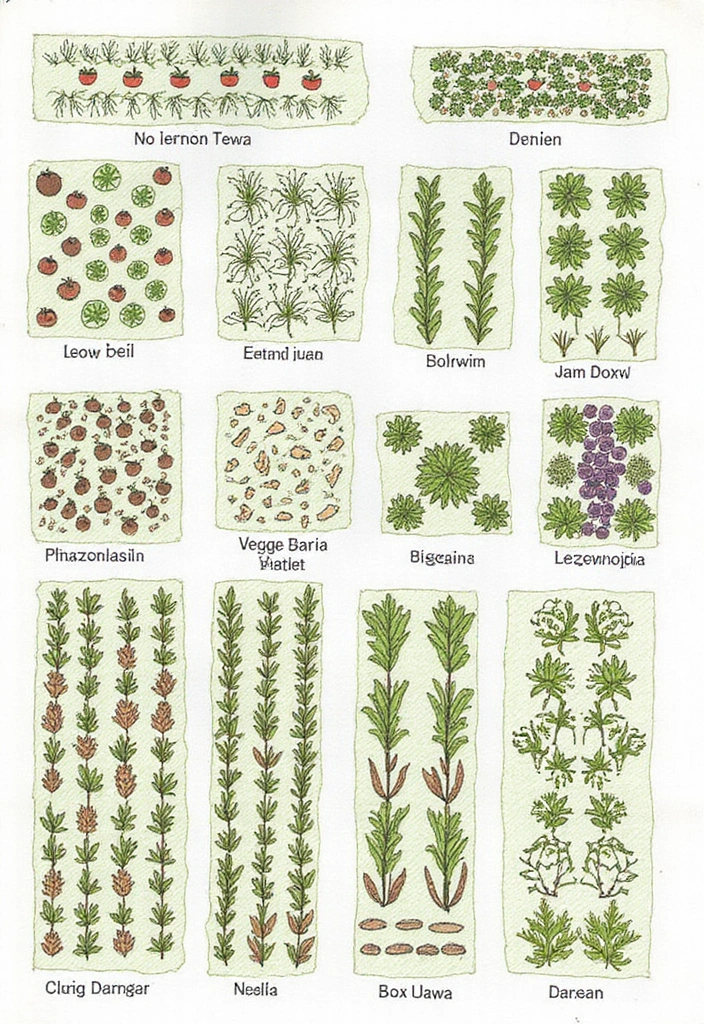
To keep your soil healthy and prevent pests and diseases, consider practicing crop rotation. This means changing the types of crops you grow in specific areas each year. For example, if you grew tomatoes in a spot last season, try planting beans the next.
Crop rotation helps maintain soil fertility and can disrupt the life cycle of pests that specialize in certain plants. To help you plan your rotating crops effectively, using a garden planner log book can be a great tool. This log book allows you to track what you’ve planted and when, keeping your garden organized and helping you remember which crops to rotate.
Additionally, understanding the specific needs of your soil can further enhance your gardening success. A soil testing kit can quickly and accurately measure your soil’s pH and nutrient levels, enabling you to make informed decisions about crop choices based on your soil’s condition.
Lastly, for a deeper understanding of crop rotation techniques and to maximize your yield, consider the gardener’s crop rotation guide. This resource serves as a year-round companion for garden layout and pest management, giving you valuable insights and tips to keep your garden thriving.
Planning your garden layout for upcoming seasons can be an exciting way to experiment with different vegetables while ensuring a healthy and productive garden!
7. Mulch Your Garden Beds
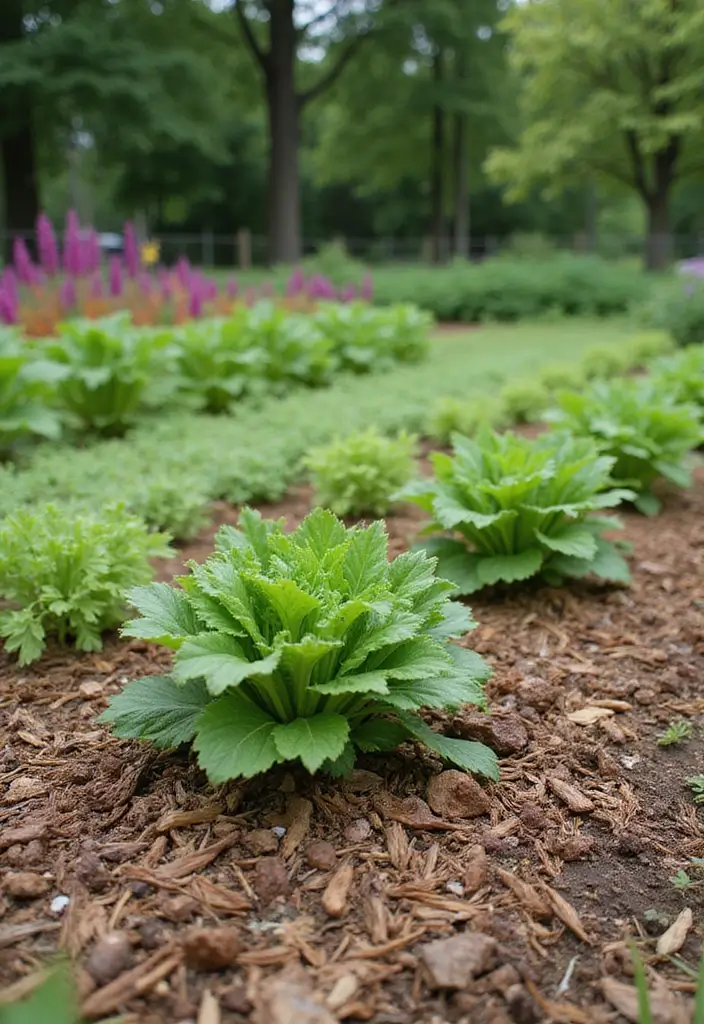
Mulching is a smart way to suppress weeds while retaining soil moisture. By applying a layer of organic mulch—such as straw, wood chips, or grass clippings—around your plants, you can keep the roots cool while enriching the soil as the mulch breaks down over time.
For an excellent option, consider using Organic Mulch (Straw). This all-natural wheat straw not only conserves water and suppresses weeds but is also sustainably sourced, making it a great choice for your garden.
If you prefer wood chips, Wood Chips for Mulching offers a natural brown variety that can add a decorative touch to your garden while providing effective coverage.
Additionally, Grass Clippings Mulch is another great option. This biodegradable processed straw can cover up to 600 square feet, making it an efficient solution for larger garden areas.
A thick layer of mulch can also prevent soil erosion during heavy rains, helping keep your garden intact. Plus, it gives your garden a neat and tidy appearance! Experiment with these different types of mulch to find what works best for your garden style.
8. Monitor for Pests
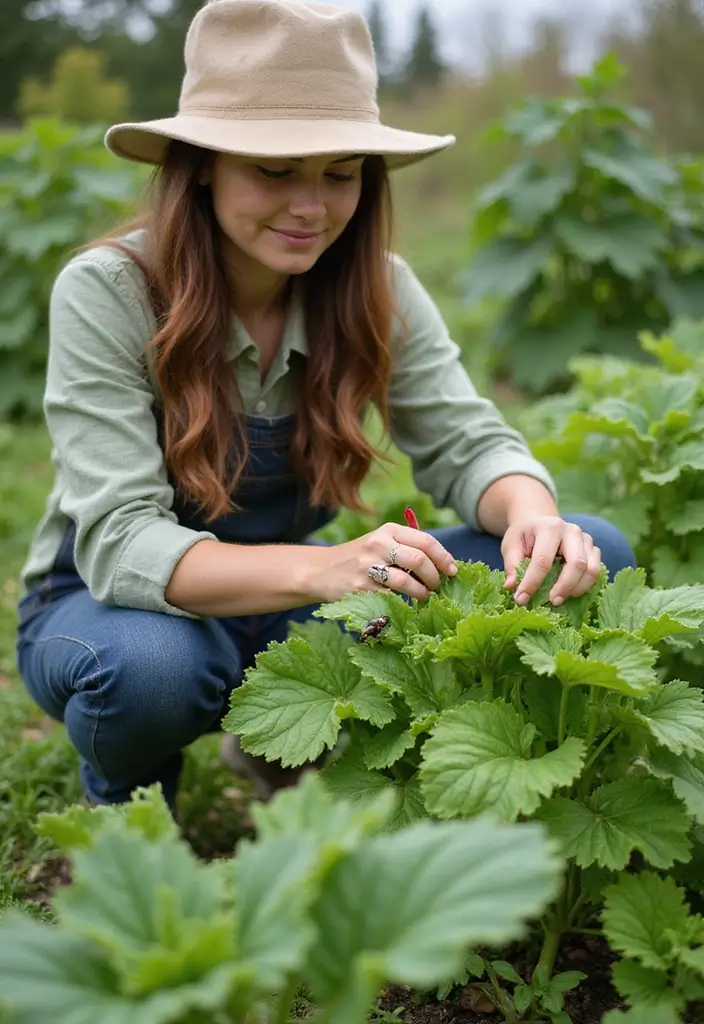
Keeping an eye on pests is crucial to maintaining a healthy vegetable garden. Regularly check the underside of leaves and around the base of plants for signs of trouble. For effective pest control, consider using Bonide Captain Jack’s Neem Oil, a versatile product that acts as a fungicide, insecticide, and miticide. It’s a great organic solution that targets pests without harming beneficial insects.
Another helpful option is Garden Safe Insecticidal Soap. This ready-to-use spray effectively eliminates a variety of pests and is safe for use around edible plants.
Encouraging natural predators like birds and beneficial insects can also enhance your garden’s resiliency. Create a diverse environment with flowers and shrubs to invite these helpers. Additionally, handpicking larger pests, like caterpillars, can be effective if done regularly.
A little vigilance goes a long way in keeping your garden safe and productive!
A thriving vegetable garden is all about balance! Regularly check for pests and invite nature’s helpers to join the fight against trouble. Your plants will thank you for it!
You Might Also Like
9. Harvest at the Right Time
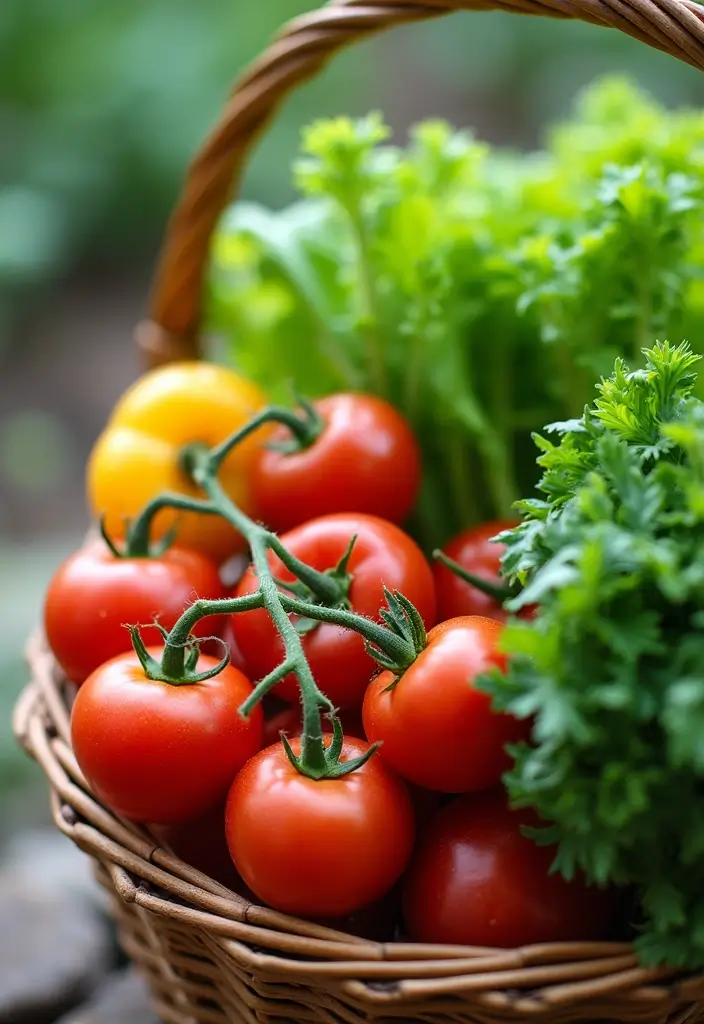
Knowing when to harvest is just as important as planting. Each vegetable has its optimal harvest time, which can affect flavor and texture. For instance, lettuces can become bitter if left too long, while tomatoes are best picked when they’ve fully ripened on the vine.
To help you stay on top of your harvesting schedule, consider using a vegetable garden planner. This handy slide chart provides guidance on when to plant and harvest various vegetables, ensuring you pick them at their peak for the best taste.
Regular harvesting encourages new growth, so don’t be shy to pick your produce often! A pair of garden harvesting scissors can make this task easier, allowing you to quickly and cleanly snip away ripe vegetables without damaging the plants. Cultivating a routine around harvesting will help you enjoy the fruits of your labor while maximizing your yields.
Timing is everything! Harvesting your veggies at the right moment not only boosts flavor but also encourages more growth. Pick often and enjoy the delicious rewards of your vegetable garden!
10. Enjoy the Process

Gardening should be a joyful and fulfilling experience! Take time to enjoy the little things—the sound of birds, the smell of fresh soil, and the excitement of watching your plants grow. To enhance your gardening adventure, consider getting a gardening tool set that includes durable hand tools. This essential set will make your gardening tasks easier and more enjoyable, allowing you to focus on the beauty of your garden.
Feel free to experiment with new plants and techniques, and keeping a record of your gardening journey can be incredibly rewarding. A gardening journal is perfect for tracking your progress, jotting down observations, and planning future plantings. This way, you can embrace the challenges and celebrate your successes with a clear view of how far you’ve come.
Don’t forget to invite friends or family to join you in your gardening pursuits! Sharing the experience makes it even more rewarding, and you can enhance your garden’s ambiance with a bird feeder. The cheerful sounds of birds will enrich your gardening experience, connecting you even more to nature.
In the end, it’s about connection: to nature, to food, and to each other. Enjoy the process and watch your green paradise flourish!
Conclusion
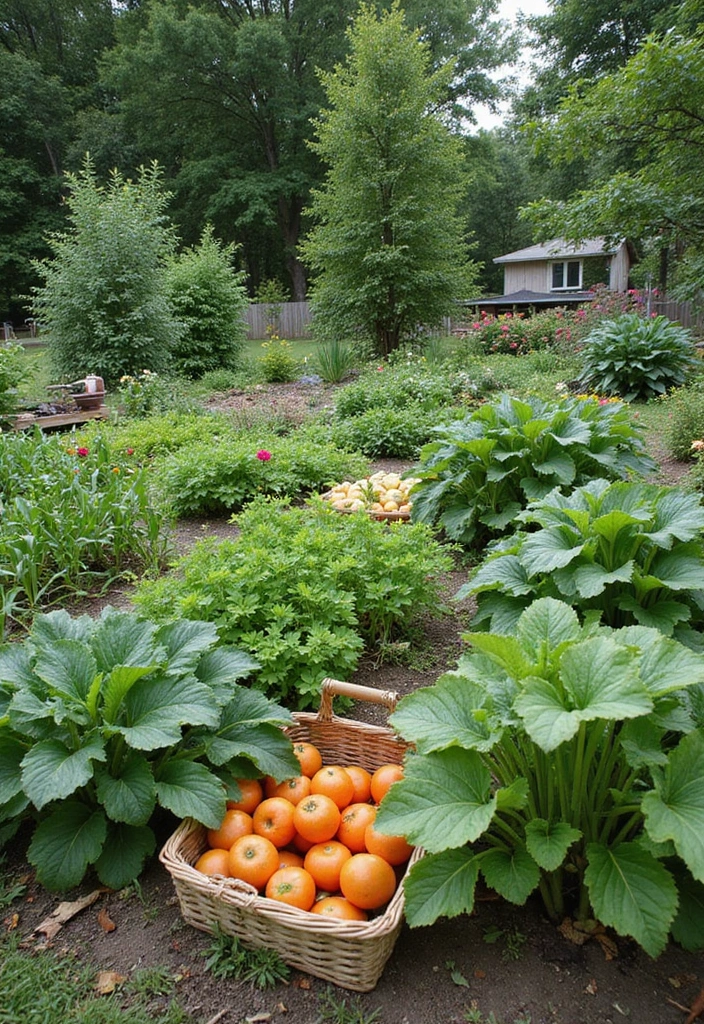
Transforming your backyard into a green paradise is an adventure filled with learning and growth.
By applying these easy, beginner-friendly tips, you’ll cultivate not just vegetables but a deeper appreciation for nature.
So roll up your sleeves, get your hands dirty, and enjoy the magic of gardening! Your fresh veggies await!
Note: We aim to provide accurate product links, but some may occasionally expire or become unavailable. If this happens, please search directly on Amazon for the product or a suitable alternative.
This post contains Amazon affiliate links, meaning I may earn a small commission if you purchase through my links, at no extra cost to you.
Frequently Asked Questions
What are the best vegetables for beginners to start with in a vegetable garden?
If you’re just starting out, consider planting easy-to-grow vegetables like radishes, lettuce, or zucchini. These veggies sprout quickly and are forgiving, giving you a sense of accomplishment early on in your gardening journey.
Starting small with these varieties can help build your confidence and set the stage for a thriving vegetable garden!
How do I know if my garden location is suitable for growing vegetables?
Choosing the right location is crucial for a successful vegetable garden. Look for a spot that receives at least 6-8 hours of sunlight each day, ideally a south-facing area. Additionally, ensure the site has good drainage and is accessible for watering and maintenance. A sunny, well-drained location will give your plants the best chance to flourish!
What is crop rotation, and why is it important for my vegetable garden?
Crop rotation involves changing the types of vegetables you plant in specific areas of your garden each year. This practice is vital for maintaining soil health and preventing pests and diseases from taking hold. By rotating crops, you can replenish nutrients in the soil and create a more balanced ecosystem for your plants.
For example, if you grew tomatoes in one spot last year, try planting beans or leafy greens in that area this year!
How can I effectively monitor and manage pests in my vegetable garden?
Regularly checking your plants is key to effective pest management. Keep an eye on the underside of leaves and around the base of plants for any signs of trouble. Utilize natural pest control methods, such as introducing beneficial insects like ladybugs or using companion planting to deter pests.
Staying proactive can help you maintain a healthy vegetable garden while minimizing the need for chemical interventions!
What should I do if my vegetable plants aren’t growing as expected?
If your vegetable plants are struggling, don’t worry—gardening is all about learning! First, check the soil quality; it should be rich and well-drained. Ensure your plants are getting enough sunlight and water, but avoid overwatering. Consider if they are planted in the right season, and don’t hesitate to research specific needs for the vegetables you’re growing. Patience and observation are key, as gardening often involves some trial and error!

